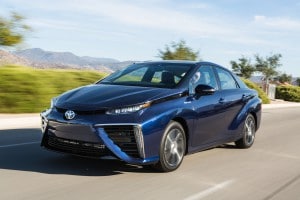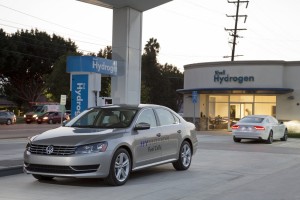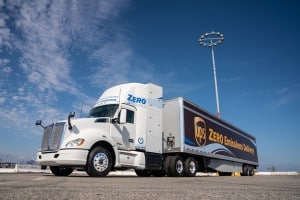
Toyota’s Mirai fuel-cell vehicle isn’t a replacement for battery-electric cars, according to a new report.
A new report from analysts at London-based Fitch Solutions predicts hydrogen fuel cell-powered vehicles, or HFCVs, will develop right alongside battery-electric vehicles rather than as a replacement product.
The report also predicts that commercial vehicle segments, particularly in East Asia and North America, will be the first to adopt HFCVs.
Fitch noted the lack of refueling infrastructure for HFCVs, and the high cost of building refueling stations, will be a significant barrier to the adoption of HFCVs in the light commercial and passenger vehicle segments. Consumers will need to be convinced of the convenience before they will consider adopting fuel-cell vehicles, Fitch noted.
(Toyota, Kenworth expand fuel cell-based heavy truck fleet)
To be clear, technically battery-electric vehicles and hydrogen fuel-cell vehicles are both considered electric vehicles.
The difference is in how the electricity is supplied to the electric motor or motors. In battery-electric vehicles the motors are supplied by batteries. In HFCVs, the hydrogen produces a chemical reaction that generates electricity with water being an additional byproduct.
Government incentives also will be a key driver in the adoption of HFCVs, more so for the light commercial and passenger vehicle segments, as consumers will have to make the decision between buying an EV or an HFCV.
When it comes to the initial HFCV adoption, especially in the commercial vehicle segment, countries that produce the most hydrogen will be among the front runners in the adoption of this technology.
(Toyota teaming up with Paccar to build at test fleet of hydrogen semis)
This is because we believe that the governments of these countries will be among the first to implement supporting policies for HFCV adoption, such as subsidies, which will also be a boon for the wider hydrogen industries.

New technology being developed by Volkswagen and Stanford University might make this type of fueling up a reality.
“In line with our view, we believe that the US, South Korea and Japan would be among the first countries to adopt HFCVs as they are some of the largest hydrogen-producing countries,” the Fitch report noted.
In 2016, the U.S., South Korea and Japan accounted for 27.6%, 10.3% and 10% of global hydrogen production respectively.
“Furthermore, we also note that China has quickly become a major player in hydrogen production, achieving a daily production capacity of 8.611 billion cubic feet per day, and will, therefore, be among the most likely to adopt and promote the adoption of HFCVs.
(Japan going all in on fuel cells)
China’s production capacity would make it as the largest hydrogen producer in 2018, in front of the U.S. which had a capacity of 3.037 billion cubic feet per day.


Plug Power(stock symbol PLUG), a world leader in Hydrogen Fuel Cells will be equivalent of the next Intel i.e chipset supplier with trademark “Intel inside” on every PC…The sticker most seen on autos in coming decades will be ” Plug Inside”.